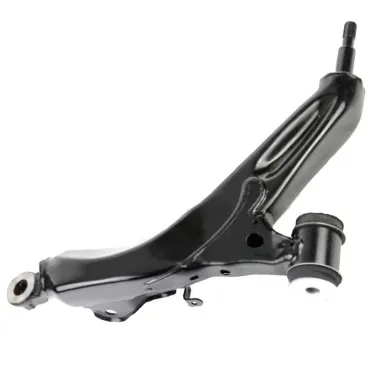
-
 Afrikaans
Afrikaans -
 Albanian
Albanian -
 Amharic
Amharic -
 Arabic
Arabic -
 Armenian
Armenian -
 Azerbaijani
Azerbaijani -
 Basque
Basque -
 Belarusian
Belarusian -
 Bengali
Bengali -
 Bosnian
Bosnian -
 Bulgarian
Bulgarian -
 Catalan
Catalan -
 Cebuano
Cebuano -
 Corsican
Corsican -
 Croatian
Croatian -
 Czech
Czech -
 Danish
Danish -
 Dutch
Dutch -
 English
English -
 Esperanto
Esperanto -
 Estonian
Estonian -
 Finnish
Finnish -
 French
French -
 Frisian
Frisian -
 Galician
Galician -
 Georgian
Georgian -
 German
German -
 Greek
Greek -
 Gujarati
Gujarati -
 Haitian Creole
Haitian Creole -
 hausa
hausa -
 hawaiian
hawaiian -
 Hebrew
Hebrew -
 Hindi
Hindi -
 Miao
Miao -
 Hungarian
Hungarian -
 Icelandic
Icelandic -
 igbo
igbo -
 Indonesian
Indonesian -
 irish
irish -
 Italian
Italian -
 Japanese
Japanese -
 Javanese
Javanese -
 Kannada
Kannada -
 kazakh
kazakh -
 Khmer
Khmer -
 Rwandese
Rwandese -
 Korean
Korean -
 Kurdish
Kurdish -
 Kyrgyz
Kyrgyz -
 Lao
Lao -
 Latin
Latin -
 Latvian
Latvian -
 Lithuanian
Lithuanian -
 Luxembourgish
Luxembourgish -
 Macedonian
Macedonian -
 Malgashi
Malgashi -
 Malay
Malay -
 Malayalam
Malayalam -
 Maltese
Maltese -
 Maori
Maori -
 Marathi
Marathi -
 Mongolian
Mongolian -
 Myanmar
Myanmar -
 Nepali
Nepali -
 Norwegian
Norwegian -
 Norwegian
Norwegian -
 Occitan
Occitan -
 Pashto
Pashto -
 Persian
Persian -
 Polish
Polish -
 Portuguese
Portuguese -
 Punjabi
Punjabi -
 Romanian
Romanian -
 Russian
Russian -
 Samoan
Samoan -
 Scottish Gaelic
Scottish Gaelic -
 Serbian
Serbian -
 Sesotho
Sesotho -
 Shona
Shona -
 Sindhi
Sindhi -
 Sinhala
Sinhala -
 Slovak
Slovak -
 Slovenian
Slovenian -
 Somali
Somali -
 Spanish
Spanish -
 Sundanese
Sundanese -
 Swahili
Swahili -
 Swedish
Swedish -
 Tagalog
Tagalog -
 Tajik
Tajik -
 Tamil
Tamil -
 Tatar
Tatar -
 Telugu
Telugu -
 Thai
Thai -
 Turkish
Turkish -
 Turkmen
Turkmen -
 Ukrainian
Ukrainian -
 Urdu
Urdu -
 Uighur
Uighur -
 Uzbek
Uzbek -
 Vietnamese
Vietnamese -
 Welsh
Welsh -
 Bantu
Bantu -
 Yiddish
Yiddish -
 Yoruba
Yoruba -
 Zulu
Zulu
replacing lower control arm
Replacing the Lower Control Arm A Comprehensive Guide
The lower control arm is a vital component of a vehicle's suspension system, playing a crucial role in maintaining proper wheel alignment and ensuring a smooth ride. Over time, wear and tear can lead to issues that may affect the vehicle's handling and safety. If you notice symptoms like uneven tire wear, knocking noises when driving over bumps, or a misaligned steering wheel, it might be time to consider replacing the lower control arm.
Understanding the Lower Control Arm
The lower control arm connects the vehicle's chassis to the wheel assembly. It allows for vertical movement of the wheels while supporting the weight of the vehicle and maintaining proper alignment. Typically constructed from durable metals, lower control arms can last for many years; however, they can become damaged due to rough driving conditions, accidents, or exposure to road salt.
Signs of a Failing Lower Control Arm
Before you jump into replacement, it’s essential to recognize the signs that indicate your lower control arm may need attention
1. Clunking Noises A loud clunk or knock from the suspension when driving over bumps could suggest that the control arm bushings are worn out. 2. Uneven Tire Wear If you notice uneven wear patterns on your tires, it may be due to improper alignment resulting from a failing lower control arm. 3. Vibration Unexplained vibrations while driving can indicate that the control arm is damaged or the bushings have worn out. 4. Steering Issues If the steering feels loose or is unresponsive, it could be due to a compromised lower control arm.
The Replacement Process
Replacing a lower control arm is a task that many DIY enthusiasts can handle with the right tools and knowledge
. Here’s a step-by-step guide to help you through the processreplacing lower control arm

1. Gather Necessary Tools and Parts You will need a jack, jack stands, wrenches, a torque wrench, and replacement parts specific to your vehicle model.
2. Lift the Vehicle Use the jack to raise the vehicle and secure it with jack stands. Ensure it's stable before working underneath.
3. Remove Wheel Take off the wheel to access the suspension components.
4. Detach the Lower Control Arm Remove the bolts securing the control arm to the chassis and the wheel hub. If it’s rusted or stuck, some penetrating oil may help loosen it.
5. Install the New Control Arm Position the new control arm in place and secure it with the bolts. Ensure to follow the manufacturer’s torque specifications for a secure fit.
6. Reassemble Everything Reattach the wheel, lower the vehicle, and ensure everything is properly tightened.
7. Alignment Check After replacing the control arm, it’s crucial to get your vehicle’s alignment checked to ensure proper handling and tire wear.
Conclusion
Replacing a lower control arm can seem daunting, but with the right tools and knowledge, it can be a manageable job for many car owners. Regular maintenance and prompt replacement of worn components not only enhance your vehicle's performance but also contribute to your safety on the road. If you are ever in doubt, consult a professional mechanic to ensure the job is done correctly and safely.







